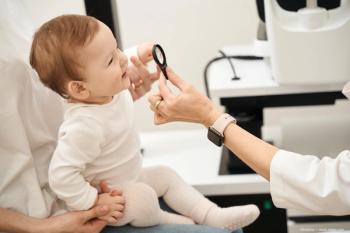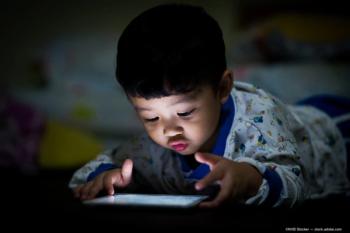
It takes a village: Vision screening success through collaboration
One pediatric ophthalmologist has spent 30 years educating the Louisiana community’s stakeholders about the importance of vision screening for young children.
Editor’s Note:Welcome to “
When I first arrived in Louisiana more than 30 years ago, I was the state’s only pediatric ophthalmologist. Early on, I was interested in enhancing methods of visual acuity testing and screening for the community’s children. By 1981, I had helped develop the state’s school vision screening guidelines and found myself as the de facto head of vision screening in Louisiana.
Along with my colleague, Carolyn Phillips, a trained vision screener, we have worked for decades to educate local pediatricians, family practitioners, and school nurses to the importance of early childhood vision screening. We also collaborate closely with the Lions Clubs.
Device-based screening
Long-standing recommendations from various professional societies and organizations have called for young children to be evaluated to identify those with visual defects, and for those determined to be at risk to be referred to a pediatric ophthalmologist.
The rate at which these recommendations are being implemented into daily practice, however, remains less than ideal. As many as 15% of children have risk factors for amblyopia, yet fewer than 20% of children receive adequate screening.1,2
Performing traditional visual acuity testing on children is time consuming, occupies a nurse or technician for several minutes, and may be inaccurate. A vision check often includes a red reflex examination with an ophthalmoscope and a visual acuity test.3
Ophthalmoscopy may not be sufficient to determine if amblyopic risk factors are present, and deprivational and refractive amblyopia are more difficult to find using an ophthalmoscope.4
Studies have also shown that there is a 0% positive predictive value for traditional visual acuity testing when children are 3 to 4 years old.3
Photoscreening, on the other hand, has been shown to be a better option, with the best evidence in kids ages 3 to 5 years.4,5
We currently recommend a mobile vision screener (plusoptiX) to our community partners. The device not only screens for refractive error, but it also picks up things like media opacities, ptosis and unequal pupils.
Although there is less evidence associated with the device’s use in children 6 months to 3 years of age, it will identify those who need early treatment, such as patching or glasses.
Device-based vision screening is extremely valuable in children with special needs and those who are developmentally delayed or nonverbal.
The device’s settings must account for the population and age group, as younger children will have more false positives. Most fail due to astigmatism; therefore, in our community we have encouraged pediatricians to use a setting of 3.00 D with the device.
Methods of outreach
I partner with an optometrist colleague, and together we go into the community and talk to pediatricians, evaluate their screening setup and answer their questions about any issues they have. This grass roots approach has been very effective in our area.
We have also worked with local representatives to pass legislation, where appropriate, to facilitate proper vision screening. Louisiana does not have a mandate requiring proof of a vision screening before a child begins school.
The Medicaid program, however, which covers about half of the children in the state, requires a vision screening as part of many health tests for those ages 6 months to 5 years.
I believe that, requiring a full vision exam is wasteful and not an effective approach for our state. A potential result would be many children receiving exams from providers who are not specialists in children’s eye care and being prescribed unnecessary glasses.
This sort of inefficiency causes parents and caregivers to become frustrated with the entire process. Legislation in this capacity would require the necessary groundwork that ensures compliance with the law as well as funding for such an initiative. This approach is not a good fit for Louisiana, although it may work other in other states.
Conclusion
Our program is effective through our grassroots and collaborative approach. By educating key members of the community-primary care physicians, school nurses, and the Lions-to the importance of early childhood vision screening, we ensure they are engaged and aware of the need. By then being available to answer questions, address concerns and visit locations to evaluate their individual vision screening processes, we can help ensure no child falls through the cracks.
Disclosures:
Alan B. Richards, MD, is a pediatric ophthalmologist at the Highland Clinic and Louisiana State University Health Science Center in Shreveport, LA. He has no financial disclosures to report.
References:
1. Donahue SP, Arthur B, Neely DE, et al. Guidelines for automated preschool vision screening: A 10-year, evidence-based update. J AAPOS. 2013;17:4-8. DOI: https://doi.org/10.1016/j.jaapos.2012.09.012. Accessed August 23, 2018.
2. Children’s Eye Foundation. Why SaveSight. https://www.childrenseyefoundation.org/S/why-save-sight/. Accessed Aug. 23, 2018.
3. Swanson J, Buckley E. Committee on Practice and Ambulatory Medicine, Section on Ophthalmology. American Association of Certified Orthoptists; American Association for Pediatric Ophthalmology and Strabismus; American Academy of Ophthalmology. Eye examinations in infants, children, and young adults by pediatricians. Pediatrics. 2003;111:902-907. http://pediatrics.aappublications.org/content/pediatrics/111/4/902.full.pdf.
4. Donahue, S. The role of technology in routine vision screening of infants and young children – a new policy statement from the American Academy of Pediatrics places heavy emphasis on photoscreening to detect treatable vision defects. Neonatology Today. 2016;11:1-4. https://www.neonatologytoday.net/newsletters/nt-may16.pdf.
5. US Preventive Services Task Force. Vision in children aged 6 months to 5 years. https://www.uspreventiveservicestaskforce.org/Page/Document/UpdateSummaryFinal/vision-in-children-ages-6-months-to-5-years-screening. Accessed Sept. 20, 2018.
Newsletter
Don’t miss out—get Ophthalmology Times updates on the latest clinical advancements and expert interviews, straight to your inbox.














































.png)


